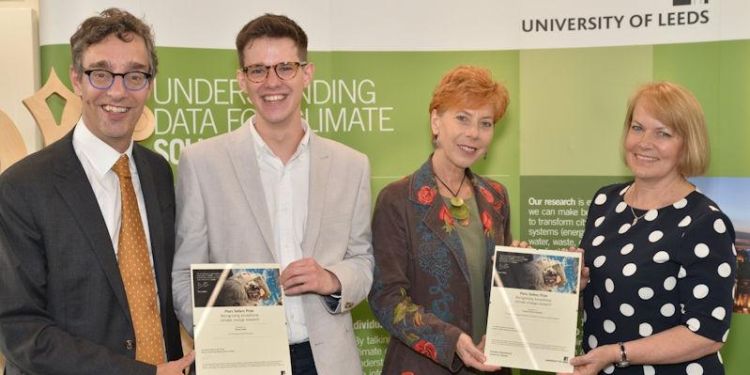
Thomas Slater
- Course: PhD in Earth and Environment
- PhD title: Mapping Ice Sheet Elevation and Elevation Change Using CryoSat-2 Radar Altimetry
- Nationality: British
- Job title: Postgraduate Researcher
Piers Sellers Prize
The prize is awarded by the Priestley International Centre for Climate in the name of the climate scientist, astronaut and Leeds alumnus, Piers Sellers. Thomas was nominated for the Piers Sellers prize by his supervisor, Professor Andy Shepherd, and was selected by the judging panel to win the exceptional PhD research prize.
Observing the Antarctic and Greenland ice sheets from space
Thomas has been using a technique called altimetry which measures the surface height of the ice sheet and how it changes over time. He added:
“With satellites, we can measure the amount of ice loss from Antarctica and Greenland and how much sea levels have increased as a consequence. Combined, the polar ice sheets have the potential to raise global sea levels by 65 m.”
In addition, Thomas’s research has implications for policymakers, as they prepare appropriate adaptation strategies, taking into account the findings of how the ice sheets behave and respond to global heating – both today and in the future. He added:
“During my PhD, my research has focussed on developing new methods for processing satellite altimeter observations and tracking ice sheet contributions to sea-level rise. For example, we recently showed that Antarctic ice losses were tracking the upper range of sea-level projections (from the IPCC’s Fifth Assessment). If this trend continues, Antarctica will raise sea levels by an additional 10 cm by 2100 – this has significant implications for coastal communities and climate policy.”
When asked what actually involves carrying out his research, Thomas answered: “A lot of coding!” He mentioned that satellites provide enormous volumes of data that can be used to reveal meaningful glaciological signals, at the scale of the entire ice sheet or individual glaciers. He added:
“Our research is very collaborative so we often spend time discussing problems and working out solutions as a group. We also get the opportunity to travel to national and international conferences to speak about our research, and to the Antarctic and Greenland ice sheets to validate our observations first hand.”
Working in the NERC-funded Centre for Polar Observation and Modelling
Thomas decided that his journey in Leeds is not yet to be finished after he studied an integrated Master’s degree in Physics. He added:
“I chose to apply for a PhD in the School of Earth and Environment as it is renowned for climate research, and at the Centre for Polar Observation in particular as working here allows me to combine my longstanding fascinations with both Earths’ ice sheets and space, contribute to climate change research and apply the skills I gained during my Physics degree to a new and exciting challenge.”
With regards to working in the NERC-funded Centre for Polar Observation and Modelling, Thomas replied:
“It’s a fantastic place to work. Students at the Centre have the opportunity to use state of the art satellites and models to help understand changes in Earth’s land and sea ice cover. It’s an exciting area of research and one that is of interest to both public and policy makers. We also have the opportunity to work with collaborators at partner universities and institutions including the European Space Agency, British Antarctic Survey, and Met Office just to name a few!”


